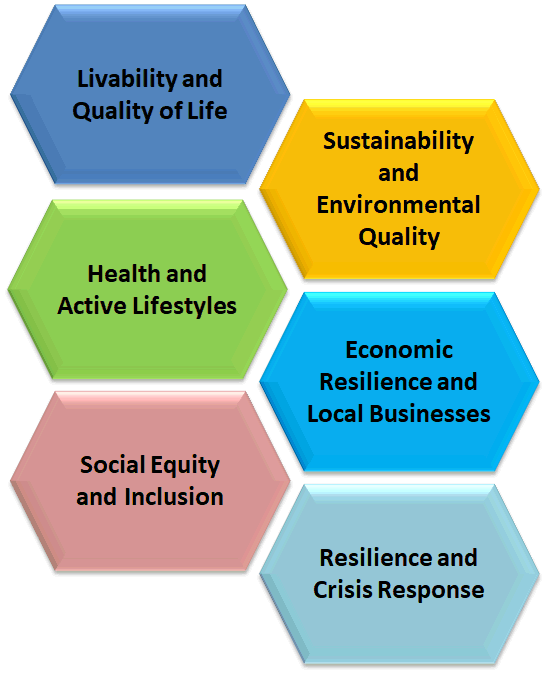|

The 15 minute city is a concept advocating that cities be designed to allow people to live, work, and play all within a 15 minute walk or bicycle ride. This urban design theory has gained popularity in recent years as a way to create more sustainable and livable cities.
 Some of the key reasons why the concept of 15-minute cities holds significance include:
Some of the key reasons why the concept of 15-minute cities holds significance include:
- Livability and Quality of Life: 15-minute cities prioritize the well-being and quality of life of residents. By ensuring that essential amenities, services, and recreational opportunities are within a short distance, people spend less time commuting and more time engaging in activities that enrich their lives. It reduces stress, enhances work-life balance, and promotes a stronger sense of community.
- Sustainability and Environmental Benefits: 15-minute cities aim to reduce reliance on cars and promote sustainable modes of transportation such as walking, cycling, and public transit. By minimizing long commutes and encouraging shorter journeys, it helps reduce carbon emissions, air pollution, and traffic congestion. This contributes to a more environmentally sustainable urban environment.
- Health and Active Lifestyles: The compactness of 15-minute cities encourages physical activity by making it easier for residents to walk or cycle for their daily needs. Accessible parks, recreational facilities, and green spaces within a short distance promote active lifestyles and improve public health outcomes.
- Economic Resilience and Local Businesses: 15-minute cities support local businesses and economies. By creating a vibrant mix of commercial spaces and ensuring that residents have access to shops and services nearby, it strengthens local entrepreneurship, employment opportunities, and the local economy. It reduces the dependency on large, centralized shopping centers and encourages localized economic activities.
- Social Equity and Inclusion: The 15-minute city concept promotes social equity by ensuring that essential services, amenities, and opportunities are accessible to all residents, regardless of their socio-economic background. It reduces transportation barriers, making it easier for vulnerable communities, elderly individuals, and people with limited mobility to access what they need within their neighborhoods.
- Resilience and Crisis Response: 15-minute cities can be more resilient in times of crisis or emergencies. The availability of essential services and amenities within a short distance ensures that communities can better cope with disruptions, such as natural disasters or health crises, by relying on local resources and support networks.

Highlights
of GDRC
Research |
|
|
A 15-minute City is not automatically a compact city or a high-density neighbourhood. Careful planning and zoning regulations can create very liveable urban areas within the "15-minute" zone.
Private sector participation , particularly private train operators, is a critical component of the 15-minute city. Urban planning rules, including zoning laws, form the other important aspect.
|

 Some of the key reasons why the concept of 15-minute cities holds significance include:
Some of the key reasons why the concept of 15-minute cities holds significance include:
